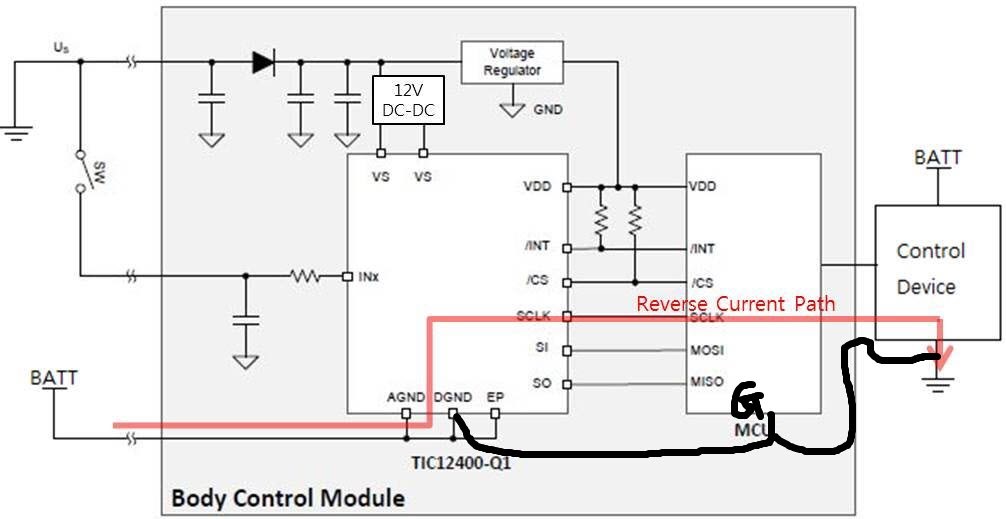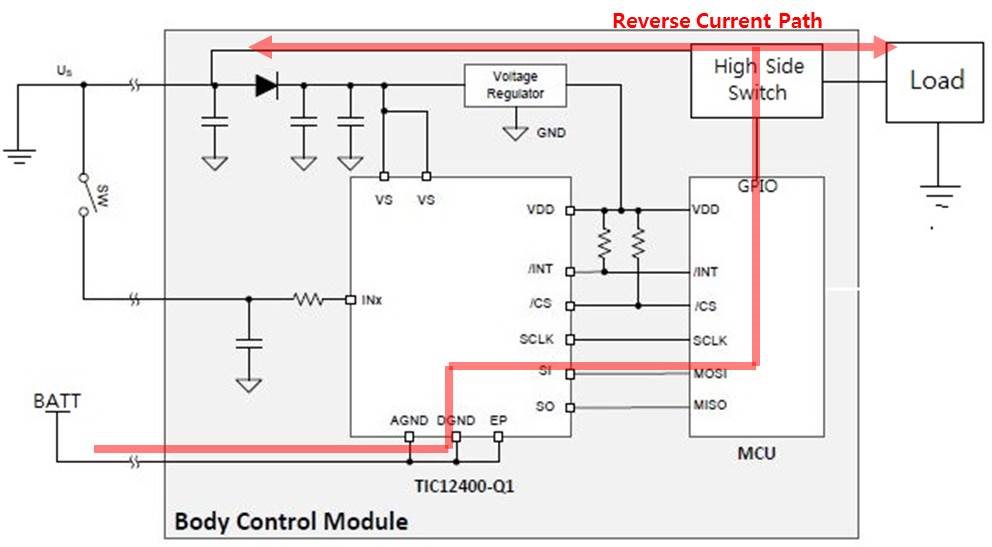Other Parts Discussed in Thread: TIC12400
Hi team.
My customer wants to apply the TIC12400-Q1 to a 36V automotive system.
To solve the input voltage range problem, the TIC12400-Q1 power supply will be supplied 12V using dc-dc.
So I want to check if there are any problems below.
1. When the battery is connected in the reverse direction, is there any possibility that a current path can flow to the SPI port through the TIC12400-Q1 internal circuit?(See case1 and case2 below)
If current can flow, how do you design the damping resistor to protect the SPI port and MCU?
2. In Case 2 below, if the 36V is input with reverse voltage, can the TIC12400-Q1 have a problem?
(There is no direct current flow from INx to Vs due to the reverse voltage protection diode. There is only the path through the SPI or GPIO port of the MCU and the control unit.)
- Case 1.
- Case 2.
Thank you!




